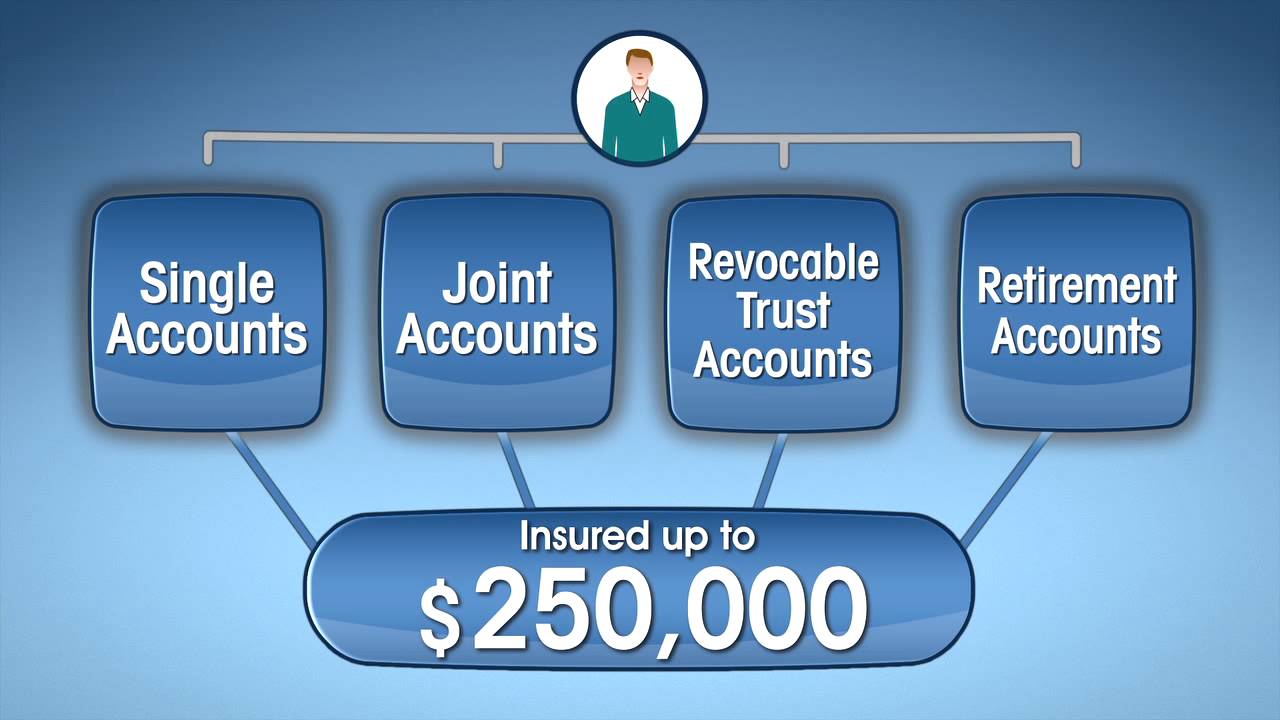

Finance
What Credit Unions Have Shared Branching
Modified: January 15, 2024
"Discover how credit unions are embracing shared branching to provide convenient financial services and enhance the banking experience for customers."
(Many of the links in this article redirect to a specific reviewed product. Your purchase of these products through affiliate links helps to generate commission for LiveWell, at no extra cost. Learn more)
Table of Contents
- Introduction
- What is Shared Branching?
- Benefits of Shared Branching for Credit Unions
- Increased Accessibility for Members
- Cost Savings and Revenue Enhancement
- Expanded Service Offerings
- Convenient Access to Financial Services
- Collaboration among Credit Unions
- How Shared Branching Works
- Steps for Implementing Shared Branching
- Conclusion
Introduction
Credit unions play a vital role in providing financial services to their members. However, one of the challenges they face is the limited physical presence they offer compared to traditional banks. Members of credit unions often find themselves needing access to their accounts or financial services when they are far from their home credit union. This is where shared branching comes in.
Shared branching is a collaborative system that allows credit union members to conduct their banking activities at any participating credit union location. It offers convenience, accessibility, and expanded services to credit union members, ensuring that they can maintain their financial transactions seamlessly even when they are away from their home credit union.
In this article, we will explore the concept of shared branching and its benefits for credit unions and their members. We will delve into the increased accessibility it provides, the cost savings and revenue enhancement opportunities, the expanded service offerings, and the convenient access to financial services. We will also discuss the collaborative nature of shared branching and how credit unions can implement it successfully.
Join us as we dive deeper into the world of shared branching and discover how credit unions are leveraging this system to enhance their member services and stay competitive in the financial industry.
What is Shared Branching?
Shared branching is a cooperative model that allows credit union members to utilize the services and facilities of other participating credit unions. It is a network of shared branches that enables members to perform a wide range of transactions, including deposits, withdrawals, loan payments, and account inquiries. Think of shared branching as an extension of your credit union, allowing you to access your accounts at various locations beyond your home credit union.
This system is made possible through a partnership among credit unions that agree to share their resources, technology, and expertise. By joining forces, credit unions provide their members with a convenient way to access their accounts and conduct financial transactions at participating branches across the country. Shared branching empowers credit union members to maintain control over their finances while on the go, without the need to rely solely on their home credit union.
Shared branching offers a wide array of benefits to both credit unions and their members. It fosters collaboration among credit unions, expands access to financial services, and enhances the overall member experience. Whether you’re traveling or simply need access to banking services outside of regular business hours, shared branching ensures that your financial needs are met.
Through shared branching, credit unions are able to leverage each other’s networks and resources, providing a level of convenience and accessibility that rivals traditional banks. Members can find shared branch locations through a shared branching locator tool, which allows them to easily find and access participating branches. This ensures that credit union members can enjoy the benefits of shared branching wherever they may be.
Shared branching is a powerful tool that demonstrates the cooperative nature and community focus of credit unions. It exemplifies the commitment credit unions have to their members and their dedication to providing exceptional member service, convenience, and accessibility.
Benefits of Shared Branching for Credit Unions
Shared branching offers numerous advantages for credit unions, allowing them to better serve their members and stay competitive in the financial industry. Let’s explore some key benefits of shared branching:
Increased Accessibility for Members
Shared branching expands the reach of credit unions, providing members with access to a larger network of branch locations. This means that members can conveniently perform transactions at any participating credit union, regardless of their location. Whether they are on vacation, traveling for business, or simply on the other side of town, shared branching ensures that members can access their accounts and receive the services they need.
Cost Savings and Revenue Enhancement
By participating in shared branching, credit unions can reduce operational costs associated with maintaining numerous physical branches. Instead of investing in new branch locations, credit unions can collaborate and share resources with other credit unions. This leads to significant cost savings and allows credit unions to allocate their resources more efficiently. Additionally, shared branching opens up opportunities for revenue enhancement through increased transaction volume and access to a larger member base.
Expanded Service Offerings
Shared branching enables credit unions to offer an expanded range of services to their members. With access to the shared branching network, credit union members can perform various transactions, including deposits, withdrawals, loan payments, and even apply for loans or open new accounts. This ensures that members have access to a comprehensive suite of financial services, enhancing their overall banking experience.
Convenient Access to Financial Services
Shared branching provides members with the flexibility to access financial services beyond regular business hours. Whether it’s early morning, evening, or weekend, members can conveniently visit a participating branch and conduct their transactions. This flexibility not only improves member satisfaction but also attracts new members who value the convenience of extended service access.
Collaboration among Credit Unions
Shared branching fosters collaboration and cooperation among credit unions. By working together and sharing resources, credit unions can collectively provide a more robust and responsive banking experience for their members. This collaboration strengthens the credit union movement and reinforces the community-focused values that credit unions are known for.
Overall, shared branching offers a multitude of benefits for credit unions, allowing them to enhance member service, increase accessibility, reduce costs, and foster collaboration within the credit union movement. By participating in shared branching, credit unions can ensure their continued relevance and success in an ever-evolving financial landscape.
Increased Accessibility for Members
One of the significant advantages of shared branching is the increased accessibility it provides for credit union members. With shared branching, members have the flexibility to access their accounts and perform transactions at any participating credit union location, regardless of their home credit union. This expanded network of branch locations ensures that members can conveniently manage their finances, even when they are far from their primary credit union.
Shared branching eliminates the need for members to find a specific branch of their credit union when they are outside their local area. They can simply visit any shared branching location and receive the same level of service and convenience as they would at their home credit union. This increased accessibility is particularly beneficial for members who travel frequently, whether for business or pleasure, as they can easily conduct their banking activities at any shared branching location along their journey.
Furthermore, shared branching provides accessibility beyond regular banking hours. Traditionally, credit unions operate during specific hours which may not align with the availability of their members. With shared branching, members can access branch services during extended hours, including evenings, weekends, and even holidays. This flexibility allows members to manage their finances according to their own schedules, providing added convenience and peace of mind.
Shared branching also serves as a valuable solution for members who have relocated or have multiple residences. Instead of opening accounts at multiple credit unions, members can maintain their accounts at one credit union and access their funds through shared branching wherever they are located. This simplifies their banking experience and eliminates the need for multiple memberships, making it easier to keep track of their finances.
Moreover, shared branching ensures that members have access to essential banking services, even in areas where their home credit unions may not have a physical presence. This is particularly important for rural areas or regions with limited credit union options. With shared branching, members in these areas can still access banking services without having to travel long distances. This not only enhances convenience but also promotes financial inclusion by ensuring that members in underserved areas have access to essential financial services.
In summary, shared branching significantly increases the accessibility of credit union services for members. By providing access to a network of shared branches, members can conveniently manage their finances at various locations, irrespective of their home credit union. This expanded accessibility allows credit unions to better serve their members, regardless of their geographical location, travel plans, or personal circumstances.
Cost Savings and Revenue Enhancement
Shared branching not only benefits credit union members but also offers cost savings and revenue enhancement opportunities for credit unions themselves. By participating in shared branching networks, credit unions can reduce operational costs and generate additional revenue streams.
Cost Savings
Operating and maintaining physical brick-and-mortar branches can be a significant expense for credit unions. By joining a shared branching network, credit unions can reduce the need to open new branches in different locations. Instead of investing in new infrastructure, credit unions can leverage the network of shared branches already established by participating credit unions. This collaborative approach saves credit unions considerable costs associated with building, staffing, and maintaining additional branches.
Shared branching also helps credit unions optimize their resources and better allocate their budgets. By sharing branch facilities, equipment, and technology platforms, credit unions can achieve economies of scale, reducing costs for each participating institution. Additionally, shared staffing models allow credit unions to share employees across different branches, maximizing workforce efficiency and reducing staffing costs.
Revenue Enhancement
Participating in shared branching networks allows credit unions to attract new members and capture additional business opportunities. When members have access to shared branches, they are more inclined to join credit unions that offer this convenience. This can result in an increased membership base and a growth in deposits and loan volumes, which in turn leads to revenue growth for credit unions.
Shared branching also expands a credit union’s potential market reach. By providing access to multiple shared branch locations, credit unions can serve members who live or work in areas without nearby credit union branches. This opens up new market segments and enables credit unions to connect with potential members who may have otherwise chosen a different financial institution. The ability to reach a broader audience can drive revenue growth and help credit unions remain competitive in the evolving financial landscape.
Additionally, shared branching can generate income through transaction fees. When members of other credit unions utilize shared branch services at a credit union’s location, the hosting credit union may charge a fee for these transactions. This provides an additional revenue stream for credit unions that participate in shared branching networks.
Overall, shared branching offers credit unions cost-saving opportunities while enhancing revenue potential. By reducing the need for multiple physical branches and leveraging shared resources, credit unions can optimize their budgets and operational efficiency. Simultaneously, shared branching attracts new members, expands market reach, and generates additional revenue through transaction fees. These financial benefits contribute to the sustainability and growth of credit unions in a competitive financial landscape.
Expanded Service Offerings
Shared branching not only increases accessibility for credit union members but also expands the range of services they can access. By participating in a shared branching network, credit unions can offer their members a broader array of financial services, providing a comprehensive and convenient banking experience.
Transaction Services
Shared branching allows credit union members to perform various transactional services at participating branches. Members can make deposits, withdrawals, and transfers between accounts, ensuring they have access to their funds wherever they are. Additionally, credit union members can also make loan payments, check their account balances, and conduct account inquiries at shared branching locations.
New Accounts and Account Services
Shared branching provides the opportunity for credit unions to offer new account services to members. Whether it’s opening a checking or savings account, applying for a credit card, or setting up a retirement account, members can conveniently handle these transactions at any shared branching location. This eliminates the need for members to visit multiple credit unions for different account services, streamlining the account opening process and enhancing member satisfaction.
Loan Services
Participating credit unions can also extend loan services through shared branching. Members can apply for and receive loans, including personal loans, auto loans, and mortgages, at shared branching locations. This convenience allows members to easily access credit union loan products and take advantage of favorable rates and terms without being limited to their home credit union.
Additional Value-Added Services
In addition to traditional banking services, shared branching may also provide access to a range of value-added services. These services can include purchasing money orders, traveler’s checks, or cashier’s checks, as well as accessing notary services or safe deposit boxes. Having access to these additional services at shared branching locations saves members time and effort in finding these services at other locations.
Technology Integration
Shared branching networks often integrate with the latest banking technology systems, providing a seamless experience for members. This can include real-time transaction processing, online and mobile banking integration, and access to up-to-date account information. Members can enjoy the convenience of today’s digital banking capabilities while still having the option to visit a physical branch when needed.
By expanding their service offerings through shared branching, credit unions can enhance member satisfaction and loyalty. Members will appreciate the convenience of accessing a wide range of financial services at multiple locations, providing them with flexibility and versatility in managing their finances. Ultimately, shared branching empowers credit unions to offer comprehensive banking solutions that meet the diverse needs of their members.
Convenient Access to Financial Services
Shared branching provides credit union members with convenient access to a wide range of financial services. Whether they are traveling, living in a different area, or simply in need of after-hours assistance, shared branching ensures that members can access the services they require at their convenience.
Extended Service Hours
One of the key benefits of shared branching is that it extends the availability of financial services beyond traditional banking hours. Credit union members can visit a shared branch during extended hours, including evenings and weekends, allowing them to conduct their banking activities at a time that suits their schedule. This flexibility is particularly valuable for individuals who work during regular banking hours or have other commitments that limit their availability during the day.
Travel Support
Traveling can often present challenges when it comes to accessing financial services. With shared branching, credit union members can easily find a participating branch near their travel destination. Whether they need to withdraw cash, deposit checks, or inquire about their accounts, shared branching ensures that members have access to the services they need, even when they are away from their home credit union.
This is especially useful for international travelers who may not have access to their credit union’s branches or ATMs. With shared branching, they can visit a participating credit union in the area and receive the same services they would at a domestic shared branching location.
Seamless Account Management
Shared branching allows credit union members to manage their accounts seamlessly, regardless of their location. Whether they need to make deposits, withdraw funds, or transfer money between accounts, members can do so at any participating branch. This flexibility ensures that members can easily handle their financial transactions, even if they are far away from their home credit union.
Access to Full-Service Branches
Shared branching provides access to full-service branches that offer a comprehensive range of financial services. Members can receive personalized assistance from experienced staff who are well-versed in credit union products and services. This level of service ensures that members can receive the same quality of support and guidance, regardless of the shared branching location they visit.
Integration with Digital Banking
Shared branching networks often integrate with digital banking platforms, allowing members to access their accounts and perform transactions online or through mobile apps. This integration ensures a seamless experience across digital channels and physical branches, providing members with the flexibility to choose their preferred method of accessing financial services.
Overall, shared branching ensures that credit union members have convenient access to the financial services they need, wherever they are. The extended service hours, travel support, seamless account management, access to full-service branches, and integration with digital banking all contribute to a more convenient and satisfying banking experience for credit union members.
Collaboration among Credit Unions
Shared branching fosters collaboration among credit unions, promoting a culture of cooperation and community within the credit union movement. By working together and sharing resources, credit unions can provide their members with a higher level of service and access to financial services beyond what a single credit union can offer.
Network of Credit Unions
Shared branching creates a network of credit unions that are committed to supporting each other and their respective members. This network allows credit unions to expand their geographic reach and offer services to members outside of their local area. By sharing their branches and resources, credit unions can extend their service capabilities, demonstrating a cooperative spirit that sets credit unions apart from traditional banks.
Member-Centric Approach
Shared branching reflects the member-centric focus of credit unions. It ensures that members have access to their accounts and financial services at various locations, allowing them to conduct their banking transactions conveniently. This collaborative approach empowers credit unions to put the needs of their members first and offer services that align with the values and principles of the credit union movement.
Promoting Financial Inclusion
Shared branching plays a crucial role in promoting financial inclusion. By expanding access to financial services through a collaborative network, shared branching helps credit unions reach underserved areas and communities. This ensures that individuals who may not have easy access to a credit union branch can still benefit from the services and support credit unions provide, contributing to a more inclusive and equitable financial system.
Information and Knowledge Sharing
Participation in shared branching allows credit unions to share information and knowledge with each other. This collaboration enables credit unions to learn from best practices and industry trends, improving their own operations and member service. Through a collaborative network, credit unions can collectively address challenges, share insights, and adopt innovative approaches that benefit the entire credit union movement.
Community Impact
Shared branching reinforces the community impact and involvement of credit unions. By working together, credit unions can collectively support local economies and communities. Shared branching provides access to banking services in areas where credit unions may not have a physical presence, helping to strengthen local businesses and individuals by providing essential financial services.
Ultimately, shared branching exemplifies the collaborative and cooperative nature of credit unions. By coming together, credit unions can provide enhanced services to their members, promote financial inclusion, and make a positive impact in their communities. The collaborative spirit of shared branching strengthens the credit union movement and reinforces the core values and principles that credit unions are built upon.
How Shared Branching Works
Shared branching operates through a cooperative model that enables credit unions to provide extended services to their members through a network of participating branches. Here’s a breakdown of how shared branching works:
Partnerships and Participation
Credit unions interested in participating in shared branching become part of a shared branching network or organization. This network typically establishes guidelines, procedures, and technology infrastructure to facilitate shared branching services. Credit unions that join the network agree to share their branch facilities and resources with other participating credit unions.
Locator Tools
Shared branching networks provide locator tools that credit union members can use to find participating branches. These tools can be accessed through online platforms, mobile applications, or through the credit union’s website. By entering their current location or desired area, members can locate the nearest shared branching location and access the services they need.
Transaction Processing
When a member visits a shared branching location, the credit union’s electronic system connects with the shared branching network’s backend infrastructure. This enables the member to access their account information and perform various transactions, such as deposits, withdrawals, transfers, loan payments, and account inquiries, just as they would at their home credit union.
Identification and Authentication
At the shared branching location, the member is required to provide identification and authentication to ensure the security of their account. The shared branch staff verifies the member’s identity by requesting identification documents, such as a driver’s license or passport, and authenticating their membership with the member’s credit union.
Shared Resources and Services
Shared branching locations are equipped with technology, systems, and staff trained to handle transactions and provide member services. The hosting credit union and staff at the shared branch collaborate to deliver the necessary services, ensuring that members receive consistent and high-quality support across all shared branches.
Transaction Fees
Shared branching transactions may incur fees for members. These fees depend on the policies set by the hosting credit union, and they may vary between credit unions. It’s important for members to review their credit union’s fee structure or inquire with the shared branch staff about any applicable fees before conducting transactions.
Through this collaborative approach, credit unions offer shared branching services that bring convenience and accessibility to their members. The sharing of resources, technology, and expertise allows credit union members to access a broader network of branch locations and receive the same level of service and convenience they would expect from their home credit union.
Steps for Implementing Shared Branching
Implementing shared branching requires careful planning and coordination among credit unions. While the specific steps may vary depending on the shared branching network or organization, here are some general steps to consider:
Research and Evaluation
Start by researching shared branching networks and organizations to find the one that aligns best with your credit union’s goals and values. Evaluate the services they offer, the technology infrastructure in place, and the requirements for participating credit unions. Consider the costs, benefits, and potential impact on your credit union and members.
Internal Assessment
Assess your credit union’s infrastructure, technology capabilities, and resources to determine if you have the necessary systems in place to support shared branching. Evaluate your staff’s familiarity with shared branching procedures and determine if any additional training or resources are needed. Identify any potential operational or logistical challenges that may arise during the implementation process.
Application and Agreement
Submit an application to the selected shared branching network or organization. Provide the necessary information and complete the required paperwork and agreements. This includes agreements related to technology integration, network access, fee structures, and compliance with shared branching guidelines.
Technology Integration
Work with the shared branching network or organization to integrate your credit union’s technology systems with their shared branching infrastructure. This may involve establishing connectivity, establishing data exchange protocols, and ensuring compatibility between systems. Test the integration thoroughly to ensure seamless functionality.
Training and Education
Train your staff on shared branching procedures, policies, and technology systems. Ensure they understand how shared branching works and how to assist members visiting from other credit unions. Provide ongoing education and support to keep your staff informed about updates and changes in shared branching practices.
Marketing and Member Communication
Develop a comprehensive marketing strategy to inform your members about the shared branching services available to them. Create promotional materials, update your website, and communicate the benefits of shared branching through various communication channels. Educate your members on how to locate shared branching locations and access the services they need.
Testing and Launch
Conduct rigorous testing of your shared branching integration and processes to ensure everything is functioning smoothly. Perform test transactions, verify data accuracy, and resolve any issues that arise during the testing phase. Once you are confident in the system’s functionality, officially launch your shared branching services and begin serving members.
Monitoring and Evaluation
Continuously monitor and evaluate the performance of your shared branching services. Gather feedback from members and staff to assess the effectiveness and satisfaction level. Identify areas for improvement and make adjustments as needed. Stay updated on industry trends and best practices in shared branching to ensure your services remain competitive and valuable.
By following these steps for implementing shared branching, your credit union can successfully offer this valuable service to your members, enhancing accessibility and providing a seamless banking experience.
Conclusion
Shared branching is a powerful tool that allows credit unions to expand their services, increase accessibility, and enhance member satisfaction. By participating in a shared branching network, credit unions can provide their members with convenient access to financial services beyond their local branches. This collaborative approach fosters a sense of cooperation and community within the credit union movement, bringing credit unions together to better serve their members.
Through shared branching, credit union members can perform a wide range of transactions at any participating branch, including deposits, withdrawals, loan payments, and account inquiries. This ensures that members have the flexibility to manage their finances wherever they are, whether they are traveling, living in a different area temporarily, or simply seeking extended service hours.
Shared branching not only benefits members but also offers cost savings and revenue enhancement opportunities for credit unions. By sharing resources and leveraging a network of branches, credit unions can reduce operational costs associated with maintaining multiple physical locations. It also opens up revenue streams through increased transaction volume and access to a larger member base.
Implementing shared branching requires careful planning, evaluation of technology infrastructure, staff training, and effective member communication. By following the necessary steps and integrating shared branching into their operations, credit unions can successfully offer this valuable service to their members, enhancing accessibility and member satisfaction.
Shared branching exemplifies the core values of credit unions, promoting member-centric services and fostering collaboration among credit unions. It plays a crucial role in promoting financial inclusion by extending access to financial services in underserved areas. The seamless integration of shared branching with digital banking platforms further enhances the convenience and accessibility for members.
In conclusion, shared branching empowers credit unions to provide their members with a comprehensive and convenient banking experience. By working together and leveraging shared resources, credit unions can expand their reach, enhance member services, and reinforce their commitment to the cooperative principles that define the credit union movement. Shared branching solidifies credit unions’ position as member-focused institutions and strengthens their place in the dynamic and ever-evolving financial industry.














